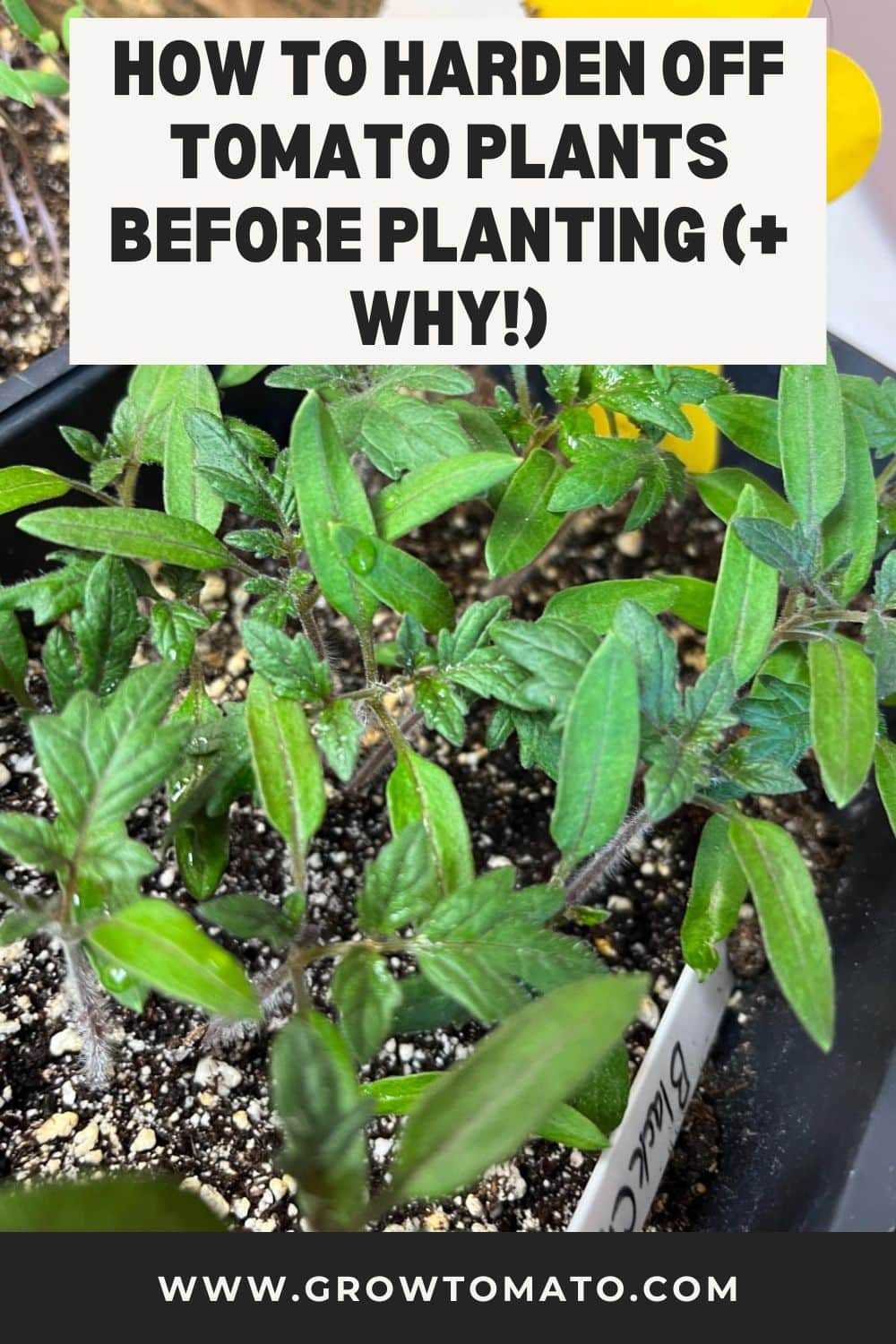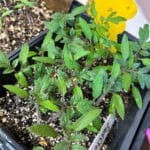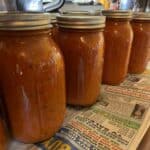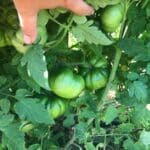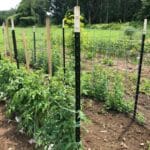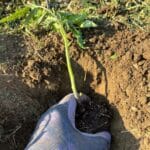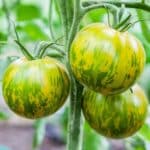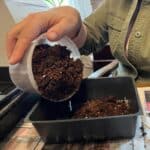It’s important to harden off your tomato plants before you plant them outside. You do not want to skip this step, or your tomato plants might suffer.
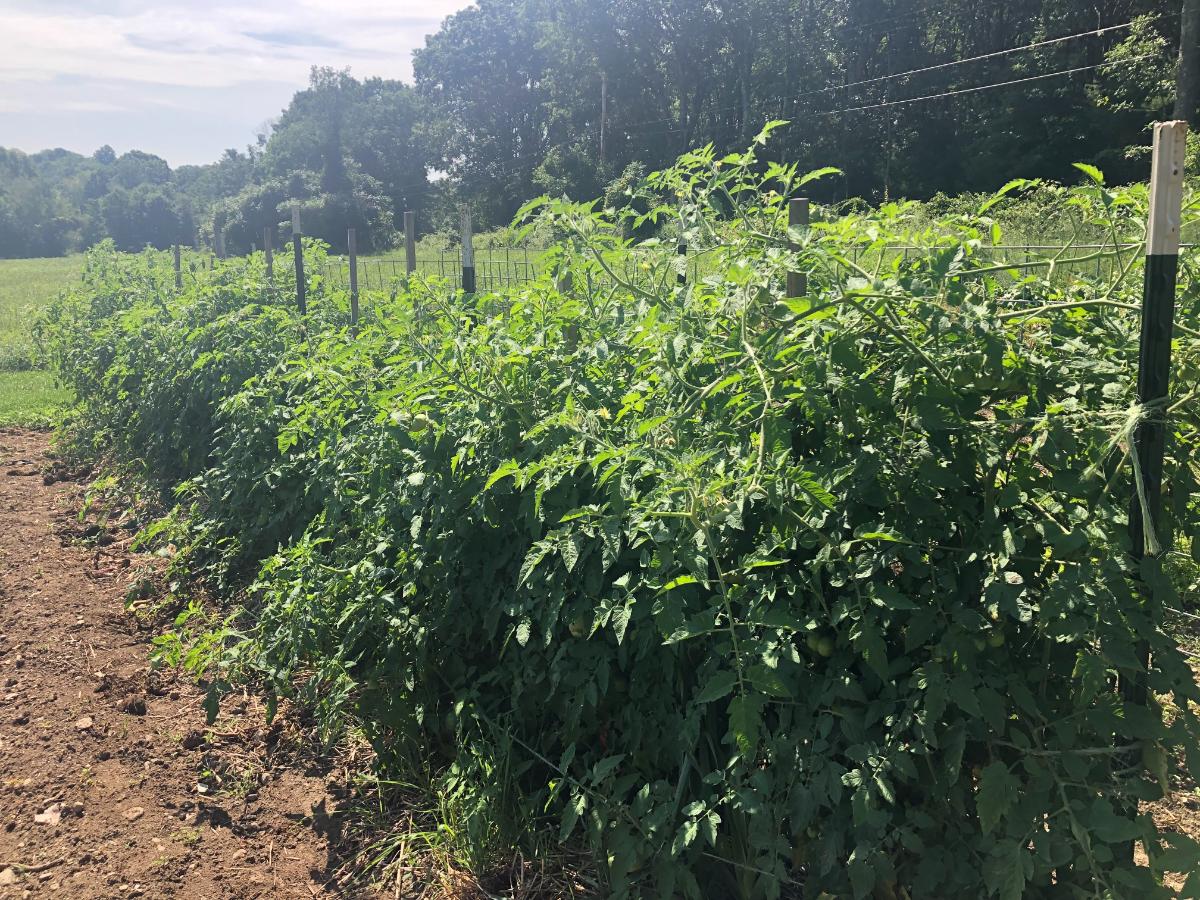
Jump to:
- What is Hardening Off?
- Why Do Tomato Plants Need to Be Hardened Off Before Transplanting?
- Hardening reduces shock and risks
- What Tomato Plants Need to Be Hardened Off?
- When Should You Start Hardening Off Your Tomato Plants?
- How to Harden Off Tomato Transplants
- Managing water while hardening
- Important Note: Even Hardened Off Tomato Plants are Frost Sensitive!
- Hardening Off Gives Your Tomatoes the Best Start to Garden Life
What is Hardening Off?
Hardening off is a gradual process of preparing your tomato transplants for living outside. It gets them ready for the more variable – and stressful – conditions of life outside in the garden (regardless of what style of gardening you do).
Hardening off means you introduce your plants to outdoor conditions.
Why Do Tomato Plants Need to Be Hardened Off Before Transplanting?

Tomato plants (in fact, all plants that are started from seed inside and grown in a protected indoor or greenhouse space) need to be introduced to outdoor conditions slowly so that they do not suffer shock, damage, or death from the sudden experience of outdoor conditions.
Inside, seeds and seedlings are grown under conditions that are quite steady and consistent. Even with fans and supplemental heat, the temperature and air movement that they are exposed to isn’t that significant; and it stays mostly the same.
The strength and heat from grow lights do not compare to direct, hot sunlight outdoors.
Outside, the weather changes and fluctuates much more. You may go from 50 degrees at night and no wind to 20 or 30 degrees higher during the day (or even more). Water is measured out and given only when needed. The only wind plants will experience is from a fan or an open window.
Your tomato plants may go from calm and quiet to baking hot sun to heavy rain and gusting wind in a matter of days. When plants experience this suddenly, they are often too weak to withstand it.
Heat and sunlight are one of the biggest reasons why we harden off tomato plants. In the direct sun, even on a moderate day, the temperature can be quite high, and the direct sunlight can easily burn plants that have not built up a resistance to it – a lot like us when the first hot rays of sun hit our winter skin!
And so, just like us, it’s best to gradually increase the exposure that your tomatoes get. Seedlings simply need time to acclimate to the stronger light and UV rays and the higher wind and water conditions that they will experience outdoors. They also need to acclimate to less consistent conditions.
Hardening reduces shock and risks
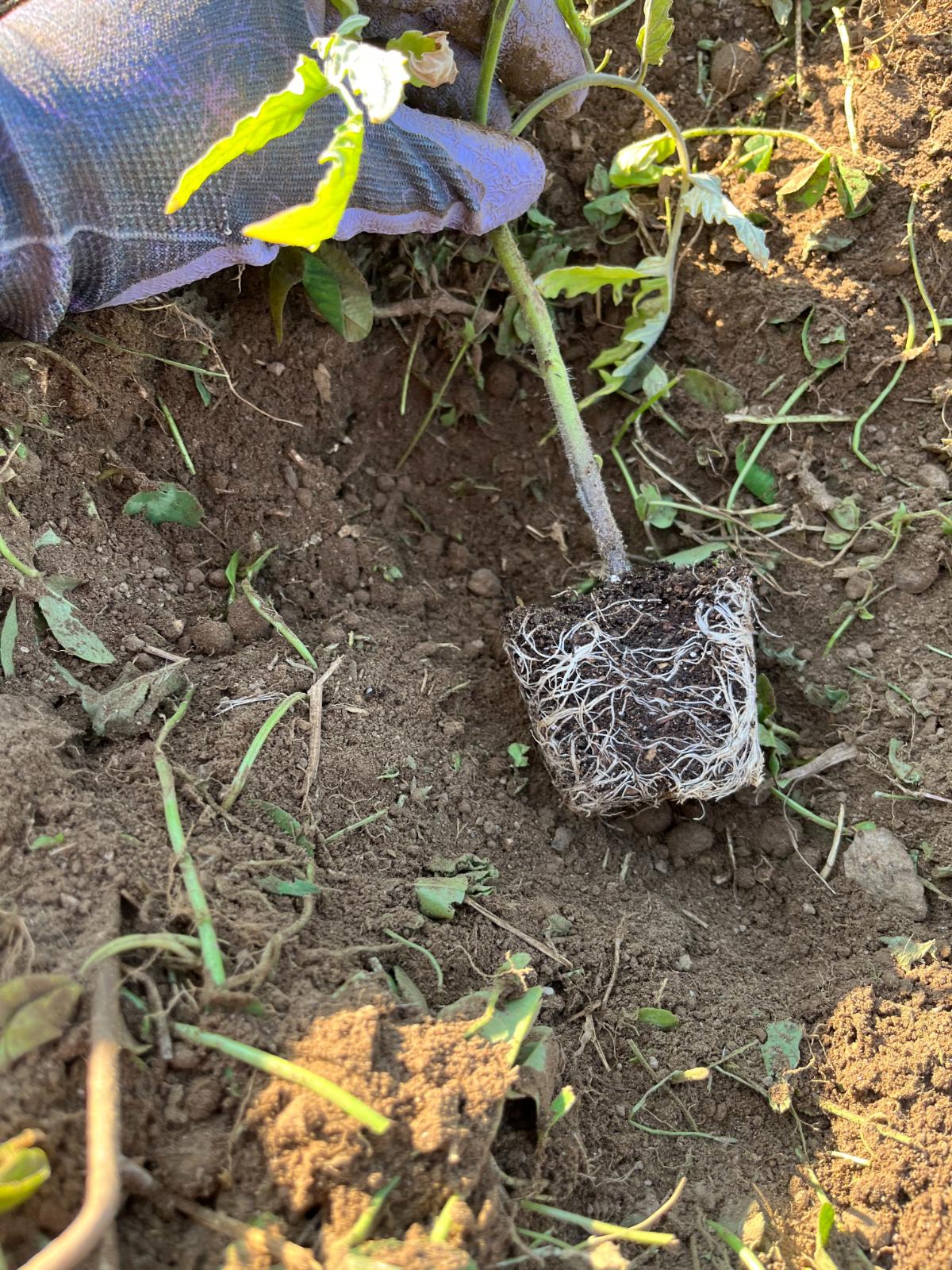
Hardening off reduces transplant shock and death and helps the tomato plants to build up stronger stems before they have to start standing up to life in the open garden.
Here’s what hardening off does for your tomato transplants:
- Creates light stress that the plants learn to respond to
- Introduces plants to less consistent watering
- Prevents sunburn
- Reduces transplant shock
- Thickens stems and leaf attachment
- Prepares them to withstand wind
- Gets them used to variable conditions
- Help plants to respond to changing temperature conditions
- Eases the transition from indoor to outdoor living
- Allows plants to recover quickly when transplanted and take off growing
Without hardening off, tomatoes will often wilt and wither immediately when they are left in the strong sun. Often, the damage is too much for the plants to overcome, and they don’t always bounce back. If they do, their growth and development is often stunted for a period of weeks and you might lose valuable growing time.
Hardening off is a sort of controlled introduction to stress. It keeps the stress at a tolerable level while the plants learn to deal with it.
What Tomato Plants Need to Be Hardened Off?

All tomato plants that are started from seed and grown indoors need to be hardened off.
- If you grew your own plants from seed in your house, harden them off before planting them outside
- If you grew your plants in a greenhouse, harden them off
- If you bought your plants from a nursery or greenhouse, harden them off unless you know for absolute sure that they have been hardened off by the grower (if in doubt, harden them off anyway!)
Even if you live in a warm climate, if your plants were not started in the ground, you should harden them off. It’s easy to think that heat and warm sunlight are a tomato plant’s friend, and in time it will be (as long as it’s not too hot), but it is a threat when a plant isn’t ready for it.
It doesn’t matter what kind of gardening or growing you do, either.
- Tomatoes growing in in-ground gardens need hardening
- Tomatoes that will be grown in containers need to be hardened off before they live outside around the clock
- Tomatoes grown in raised beds need to be hardened off, too
When Should You Start Hardening Off Your Tomato Plants?

You should start hardening off your tomato plants 10 to 14 days before you plan to plant them outside.
A good target is to start hardening off your tomatoes one or two weeks before your last frost date (because most people use the last frost date or a week or so after as the target date for planting their tomatoes outside).
How to Harden Off Tomato Transplants

The process of hardening off is simple. All you need to do is to introduce your plants gradually to the outdoors. While this might sound complicated or confusing, it’s not. You just take them out for short periods and then extend those periods over the next 10 to 14 days.
It’s best to start hardening off your tomatoes on a moderately cool or overcast day. The hot sun is one of the biggest killers of unacclimated tomato transplants. If you don’t have cloudy weather in your forecast, just make sure the first place you put your tomato plants outside has plenty of shade.
If you don’t have shade in your yard, you can place the plants under a patio umbrella or under a table (but not a glass-top table).
It’s also beneficial to introduce your plants to a little bit of water-related stress before you start hardening. Don’t let them get dry and dusty, but let the plants get a little thirsty. For a couple of days before hardening, let the plants’ soil get a little extra dry before you water.
Here’s a rundown of how to harden off tomato plants:
- On the first day, take your tomatoes outside for just one to two hours. Put them in a shaded spot. On this day, they don’t need direct sun. Keep them out of high winds. For the first couple of days, weaker morning sun is best.
- On the second day, put them out for a longer period. Two or three hours is good. Let them have light sunlight for an hour and keep them in the shade the rest of the time.
- From day three onwards, continue to leave your plants outside for a bit longer each day – extend the time by one half to one hour daily.
- Let the plants get more sunlight and experience more breezes. Protect them a little less as the days go by.
- After four or five days, the plants should spend the whole time in sunlight.
- Continue to lengthen the time your tomatoes stay outdoors.
- By about day eight or nine, you can leave the plants outside overnight as long as the temperature will not get too cold! Ideally, tomatoes should not stay out overnight under 40 degrees Fahrenheit (4.4 C). Nighttime temperatures in the 50-degree range or above are best.
- For the last couple of days, let your tomato transplants live out in their pots full-time, day and night. When they can tolerate this kind of living, they are ready to be planted outside as long as planting conditions and the weather are right.
Managing water while hardening
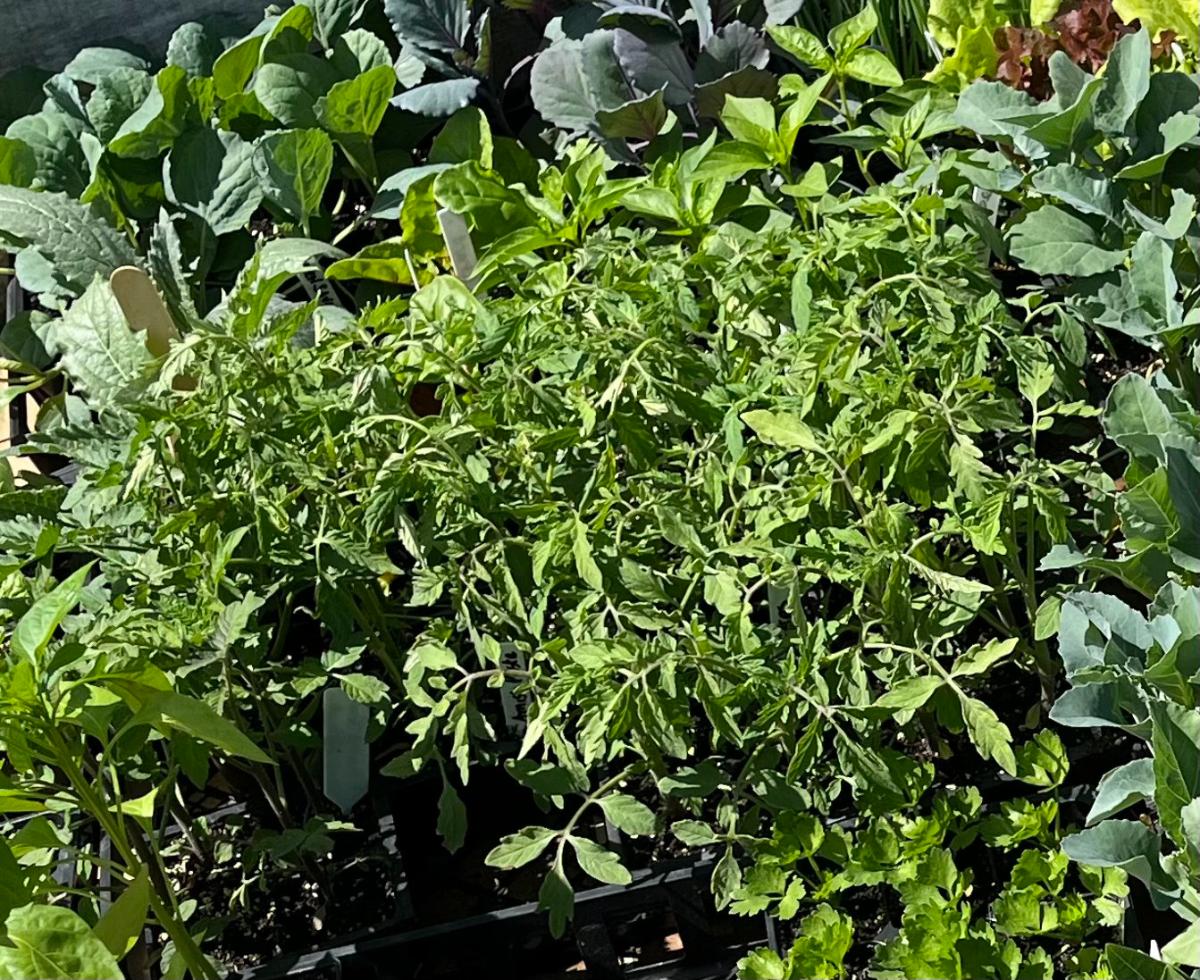
Keep in mind that your tomato plants will dry out faster in the sun, heat, and wind outside. While a little bit of water stress is beneficial, you don’t want to take it too far.
- Check potted tomato plants daily and water when the top of the soil is dry – remember there isn’t much soil in the pots for these mature seedlings!
- You may even need to water a couple of times per day, especially in hot sun, high heat, or if the plants are large
- You can let the soil get a little on the dry side to induce beneficial stress. But the plants should not be allowed to become wilted
Important Note: Even Hardened Off Tomato Plants are Frost Sensitive!
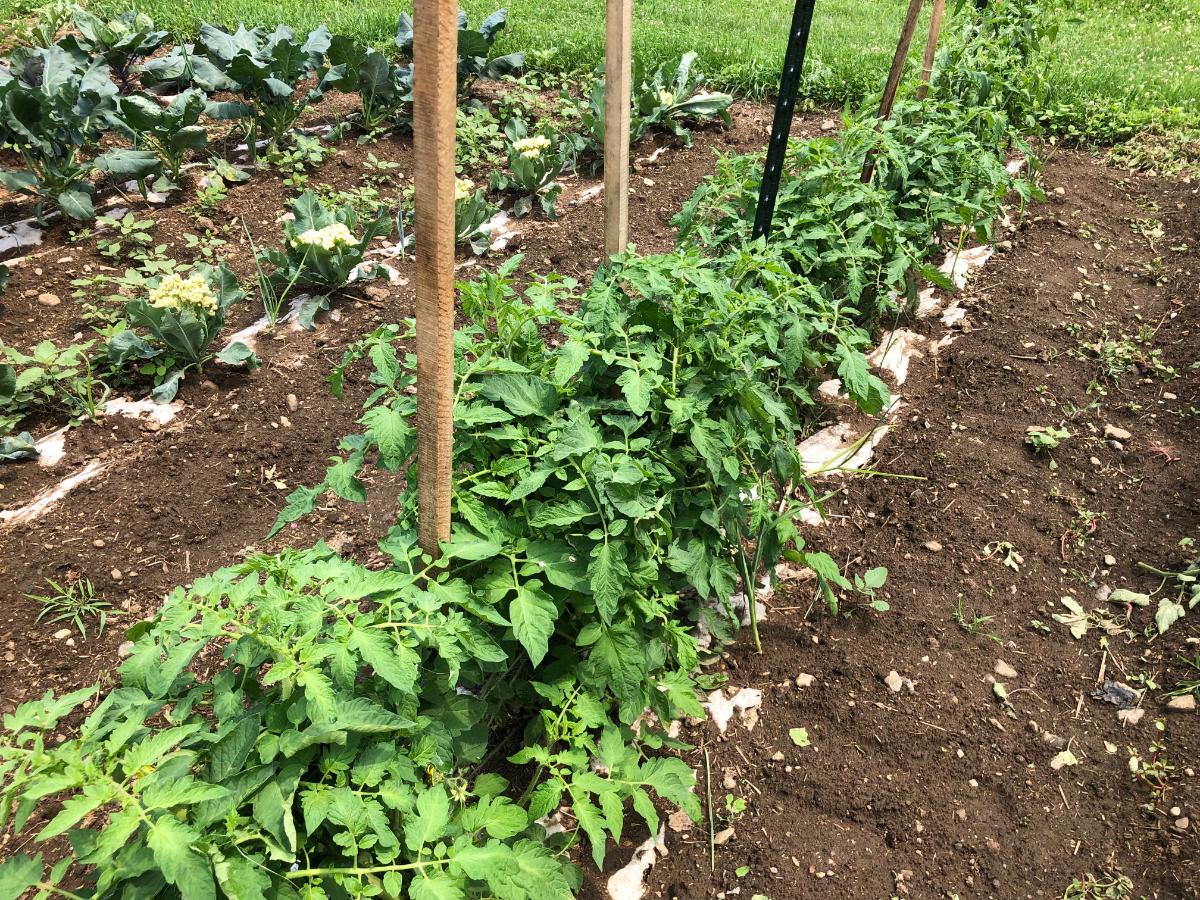
Keep in mind, hardening off prepares tomatoes for the different and more inconsistent conditions of outside, but it can’t turn a tender, frost-sensitive plant like a tomato into a plant that can survive frost or freezing weather.
This is why it is important to time your transplanting and your garden season carefully.
- Know what the expected last frost date is for your area
- Don't plant tomatoes outside before your last frost date
- During the hardening process, if a frost is predicted or if temperatures are under 40 F (4.4 C), bring the plants back indoors
- It won’t hurt your hardening process if your tomato plants have to come inside for a night or two, even if they’ve already been living outside overnight
Climates these days are less predictable than in the past. Weather conditions can be out of season at times, and a freak late frost (even one after your expected last frost date) is something you should always be prepared for if you garden.
If a late frost is predicted, even if your plants are in the ground, you can protect them by covering them with frost fabric, old sheets, or floating row cover. Just make sure to secure the fabric so it isn’t blown off overnight.
Not sure when to plant? Here are some measures and tips that can help: 4 Measures That Tell You When To Start Planting
Hardening Off Gives Your Tomatoes the Best Start to Garden Life
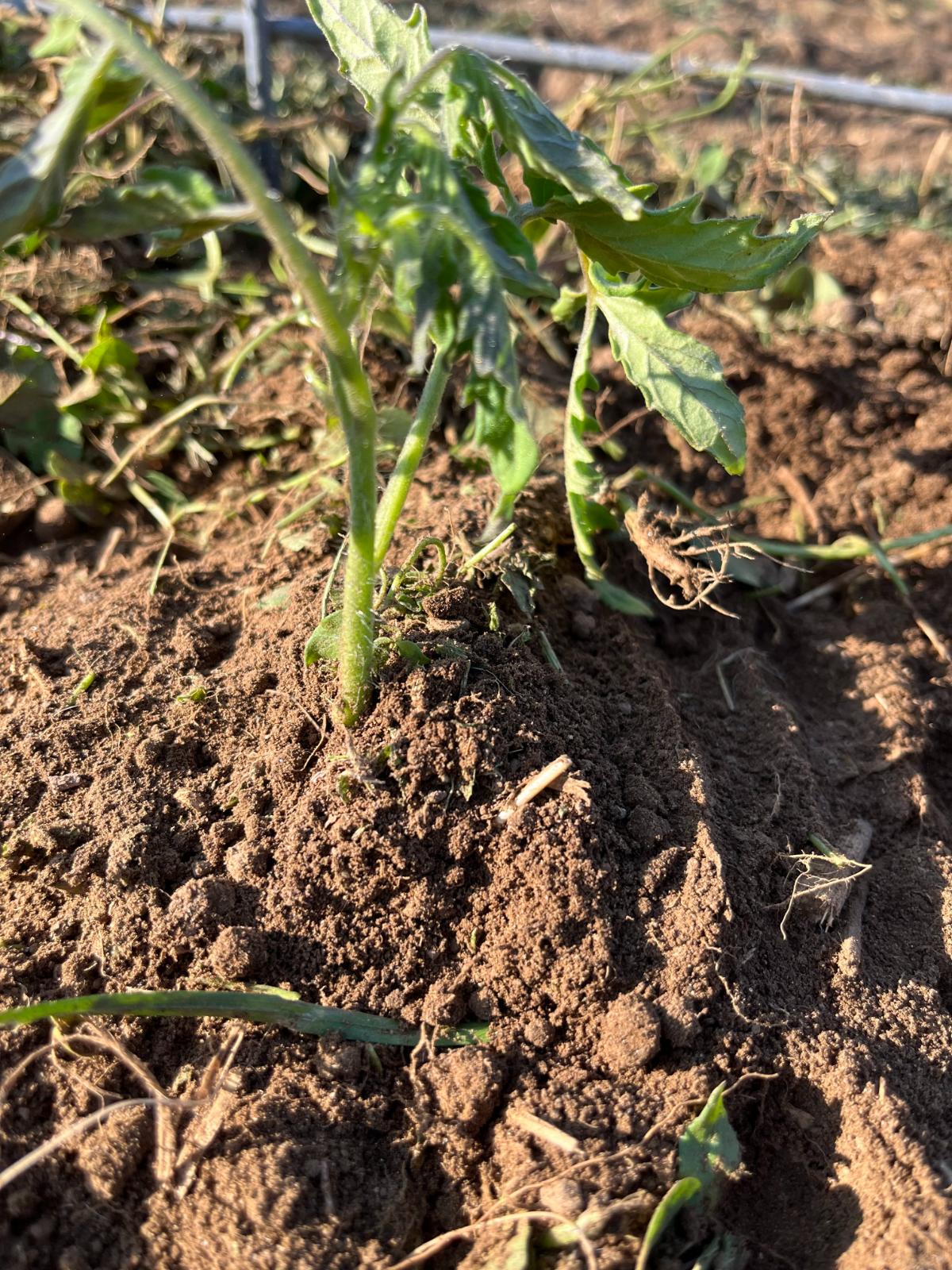
This simple process of introducing your tomato plants to the outdoors gradually over a couple of weeks will set them up for a strong start in their garden life.
Do yourself – and your tomatoes – the favor of going the extra distance, and they will reward you with a seamless transition and a quick response to life in the ground (or containers or raised beds) outside.
